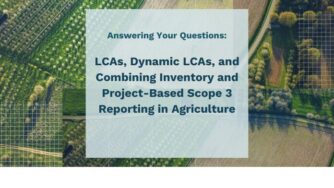One of the main motivations for the use of carbon credits came from a simple economic argument: they provide an efficient mechanism to fund emission reduction projects that
A. deliver larger emission reductions at less cost than other alternatives; and
B. would not happen without the injection of additional funding.
Consider another example for Acme, Inc. Let’s say Acme finds that the best option for reducing its own emissions would cost $50 per tonne-year of reduced emissions, and that another organization, Trash Removal Services (TRS), has a proposal to reduce their emissions at a cost of only $10 per tonne but cannot fund the project itself. So for the same cost of reducing their own emissions by one tonne, Acme’s $50 could instead pay for TRS to reduce their emissions by five tonnes. That’s a lot more efficient, right? Simple!
As often happens, it’s not that simple:
- The $10 per tonne cited by TRS was a prediction. What if the prediction was wrong? History has shown it could be wrong for many reasons: innocent mistakes by well-meaning actors trying their best to predict the future; errors in assumptions about future savings; deliberate gaming by bad actors; and simple bad luck (market swings, weather effects, etc.)
- Acme’s estimate of $50 per tonne-year to reduce its own emissions is also an estimate. What if this estimate turns out to be high, as might happen if a new technology is unveiled that reduces the cost of capturing emissions to $30 per tonne-year? Or if the estimate is low, as might happen if it turns out Acme’s analysis of the complexity of capturing emissions was incomplete? Such uncertainties are common and create a risk that the company’s capital might either be applied where it isn’t needed or insufficiently applied where it is most needed.
- Climate science tells us that Acme will need to reduce its net emissions to zero in the next 30 years. Would it be better for Acme to invest its $50 per tonne in achieving this longer-term goal?
- Are there better ways to pay for TRS’s emission reductions? Landfills perform a trash disposal service. Charging additional fees to the service users (towns, cities, companies, etc.) could pay for the emission reductions while also incentivizing reductions in waste. If TRS were to do this on their own they would run the risk of making their services more expensive than those of competitors, which might threaten their business. Could fees be mandated for all organizations delivering waste to landfills?
Dealing with these questions and ambiguities has led to the creation of standards and practices that attempt to level the field for all players.
Learn more by reading The Definitive Guide To Carbon and Climate Commitments.



